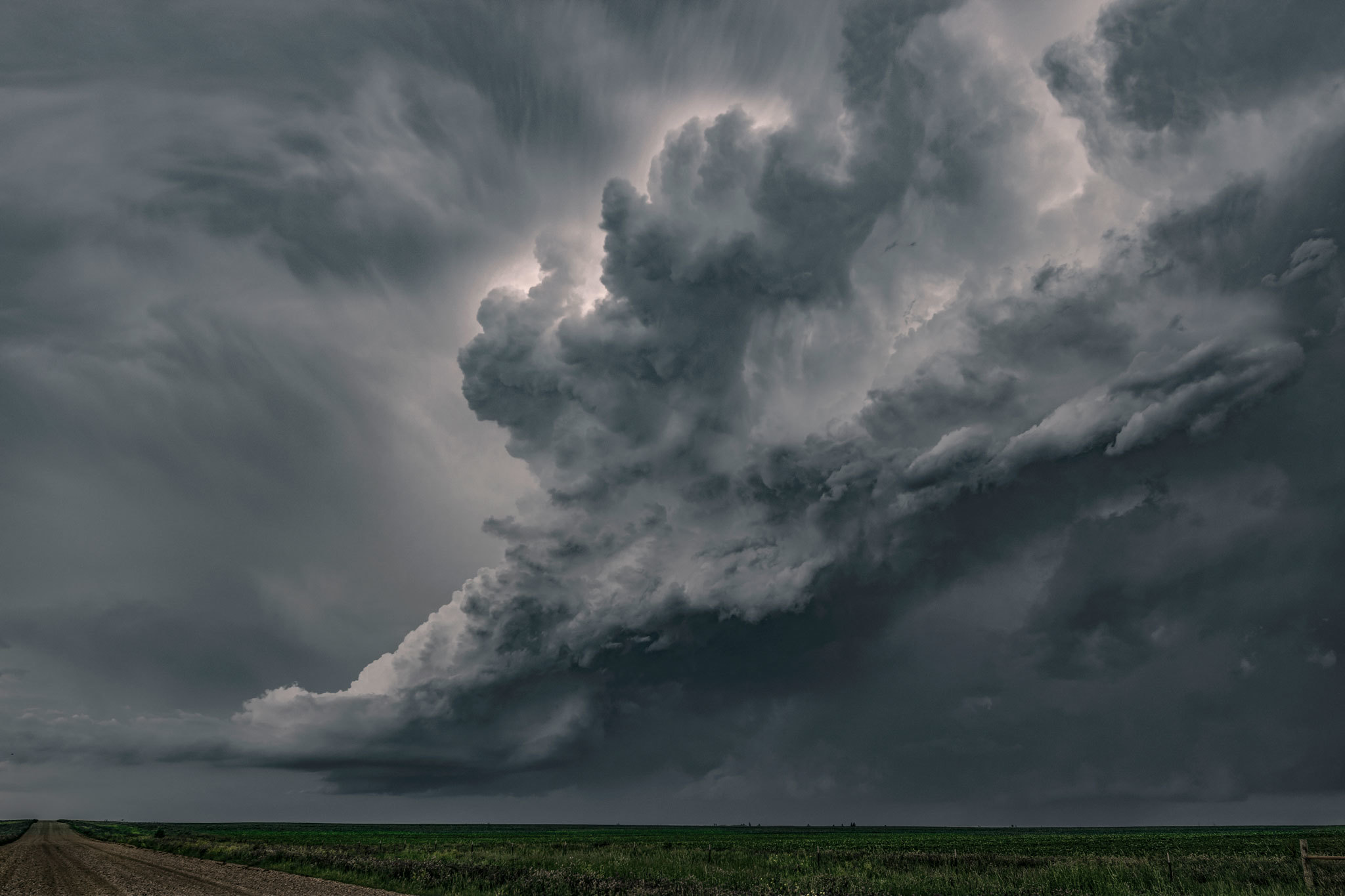August 4, 2018
A devilish tornado near Dodge City, Kansas, in 2016 is just one of about 30 twisters and countless storms Kim Hines has travelled to see over the past decade.
As a child, the television was always tuned to Environment Canada's weather channel in her home in Winnipeg's North End.
Back then, Hines would wait impatiently for the word "thunderstorms" to flow across the screen.
Hines's father, a forecaster for Environment Canada, would tell his young daughter stories of tornado touch-downs near the airport.
"If there was a storm coming through at nighttime ... I would get up, and probably get everyone else up to watch the lightning," Hines recalls.
"Dad, I would always hear him on the phone talking to someone at Environment Canada about what was going on."
One muggy summer afternoon, a distant jolt of thunder drew her away from the television and outside, barefoot and excited. The pavement was scorching hot on her little feet; the air was heavy; and the sky, it was a mean green.
She ran to her dad screaming "the sky is green, the sky is green, is it a tornado?!"
Not yet aware of the storm, he followed her out to the street corner for a clearer look. He lit a cigarette and took a swift draw, exhaled and briskly walked back into the house while swearing under his breath.
"Is it a tornado dad?! dad! dad! dad!" Hines recalls in a moving Facebook post from April. "Could be Kimmy, get in the house!"
And so she did, staking out a spot upstairs in front of a south-facing window where she could track the action.

Still no "thunderstorms" streaming across the weather channel. And then, there it was.
"I heard dad yelling at some poor guy at Environment Canada. There was nothing much written on TV for this storm … and then the warning appeared! When that warning lit up on the screen, my heart jumped into my throat! Dad did that! So cool! I stared at the warning, read it a million times! I was thrilled!"
It was a supercell, an ominous twisting thunderstorm propelled by a deep updraft, capable of producing severe weather and occasionally even tornadoes.
The experience with her dad stayed in the back of Hines's head for decades and laid the groundwork for a full-blown storm chasing obsession that emerged in adulthood.
Her father died this past April before the pair could go chasing together.
"We never got to do it, which is really kind of sad," she says.
Hines wishes they could've caught a tornado in action together, but she looks back on that cherished supercell memory with a renewed understanding of why she is so transfixed with storm chasing today.
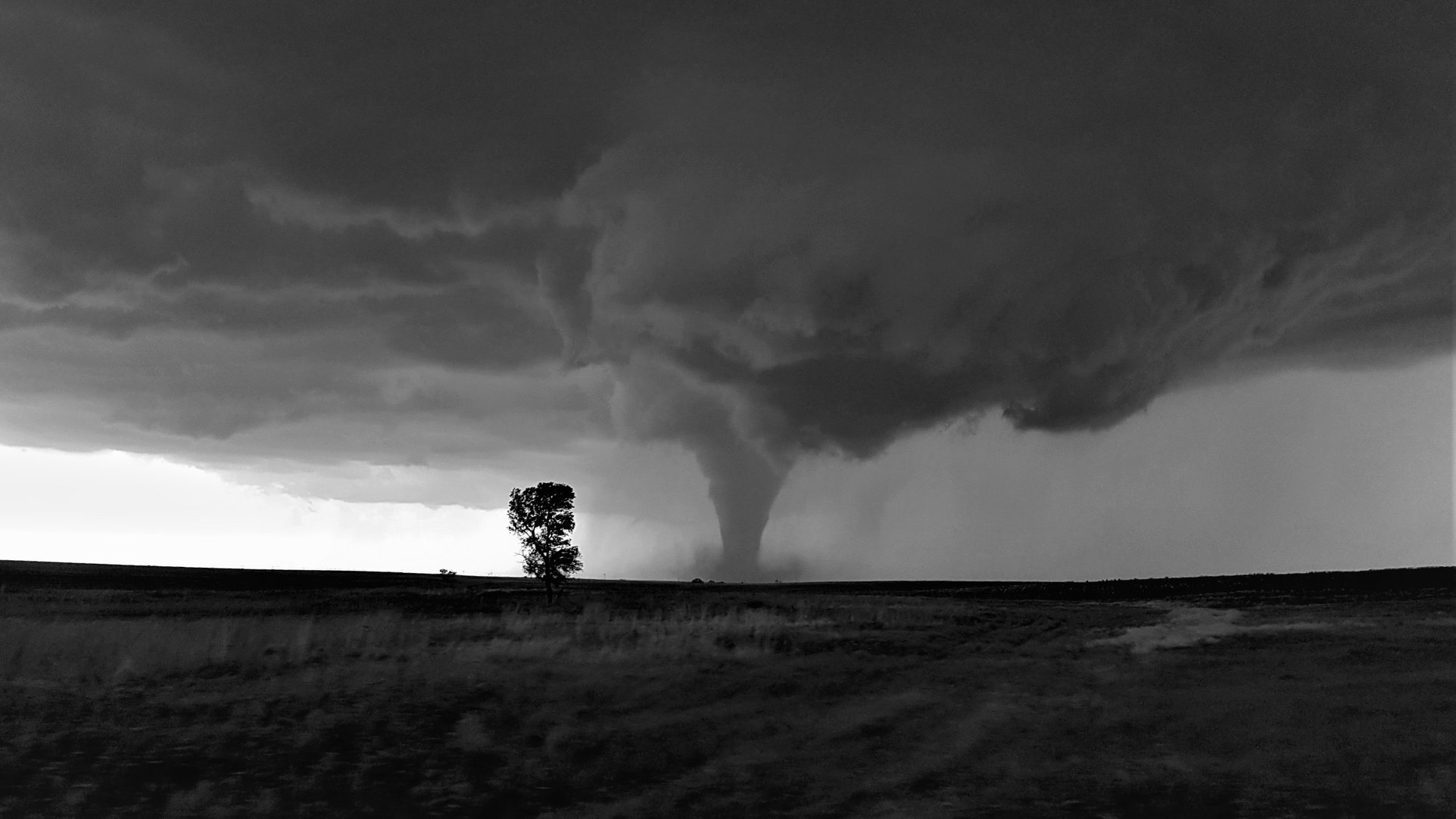
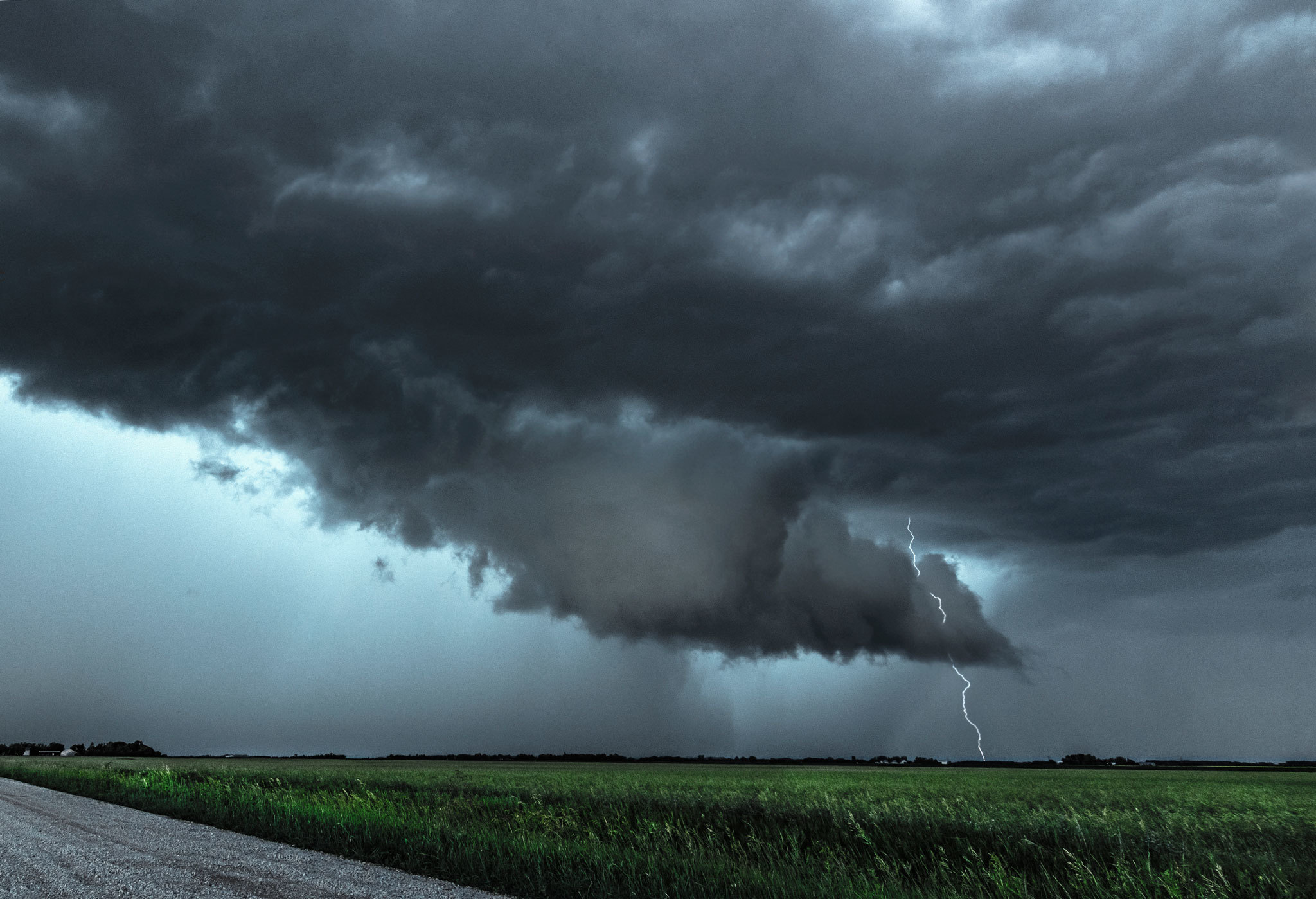
It isn't uncommon for chasers to cite one meaningful run-in with a storm as the basis for their adrenaline-fueled obsession and all that comes with it: cancelling social plans to go check out a developing storm; vacationing in the path of "Tornado Alley" twisters in the U.S. Midwest; taking university-level courses on storm chasing; shelling out thousands of dollars for fancy camera gear; using the latest weather forecasting smartphone apps and commercially available radar technology; and reinforcing vehicles with hail-resistant coatings.
Some, like Manitoba-based Jordan Carruthers, even sell their obsession to others in the form of storm chasing tours.
But there's also an almost hereditable component to what makes many chasers who they are.
One of the more well-known examples of storm chasing in pop culture that illustrates this point well unfolds at the beginning of the 1996 disaster epic Twister.
Early in the film, five-year-old Jo Thornton watches in terror as a devastating F5 tornado tears off the family storm cellar doors and pulls her father to his death. She, too, feels the pull and grows up to become a meteorologist and researcher bent on studying tornadoes in hopes of preventing similar deaths.
The most powerful tornado ever recorded in Canada, also an F5, touched down in Elie, Man., in 2007.

As in the case of Hines, Carruthers and Misheyla Iwasiuk, it isn't altogether rare to find a real-life chaser who was first possessed by the dark beauty of storms with an older, previously possessed loved one by their side.
For Iwasiuk, one of those transformative moments came on June 26, 2012.
Based in Boissevain, Man., about 220 kilometres southwest of Winnipeg and near the U.S.-Canada border, Iwasiuk and her dad set out toward Moose Jaw, Sask., armed with little more than knowledge of a tornado warning, a cheap video camera and a budding curiosity in storms.
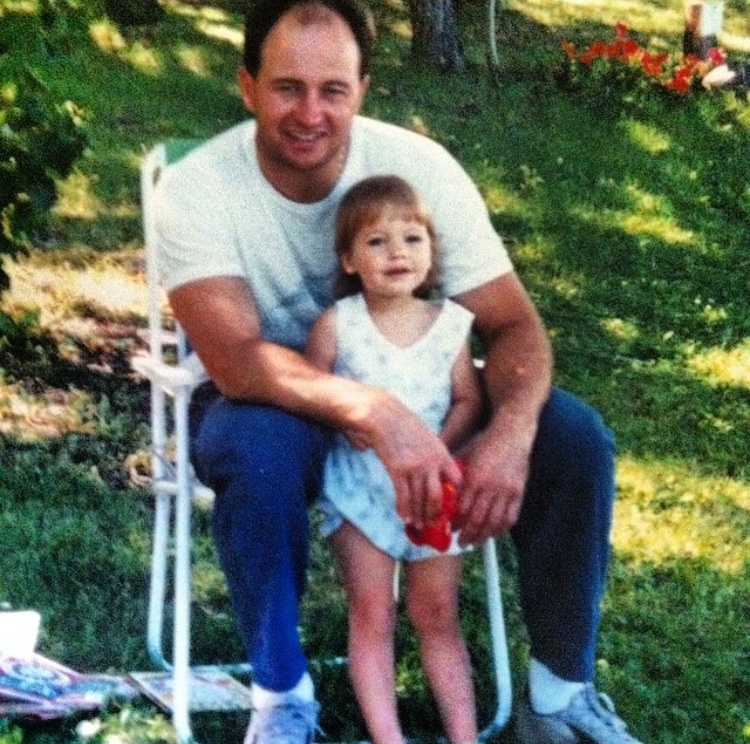

"We just kind of drove and we had nothing to go on," she said, adding nature called and they pulled over on a highway near Mortlach, Sask.
"My dad had to use the washroom on the side of the road and his back was turned and I was looking at the sky and down drops the tornado in the distance," she recalled.
So off they drove toward the tornado.
In a grainy video captured that day by the then-amateur chasers, you can hear Iwasiuk beam "it touched the ground!" while her father yells at a man in a backyard to take cover.
Misheyla Iwasiuk and her father caught a twister in the act near Moose Jaw, Sask., on June 26, 2012. That encounter was enough to get her hooked on storm chasing. (Supplied by Misheyla Iwasiuk)
"It was an incredible rush," the 29 year old says. "That moment kind of solidified, 'Yeah, I'm probably just going to do this all of the time as long as I can."
Nowadays Iwasiuk has a more refined approach, although she says her dad sticks to his "storm instinct" and the conventional weather network forecasts.
"There are lots of people who don't necessarily use these ... tools, they just like to go out and watch the sky, which is great because if you're too focused on the tools that you're trying to catch the storm and you're eyes aren't actually on the sky, you're going to miss things, and that's part of the beauty of storm chasing," she said. "I like to do a little bit of both."
She swears by apps like Radar Scope, which shows lightning strikes and hail contours, as well as a variety of online forecasting tools to help pinpoint the location and severity of storms in southwest Manitoba and beyond.
She and other chasers also let each other, and Environment Canada, know when they're tracking a storm by tweeting photos, date and location details along with the hashtag #mbstorm. (Similar hashtags are used in Alberta and Saskatchewan: #skstorm and #abstorm.)

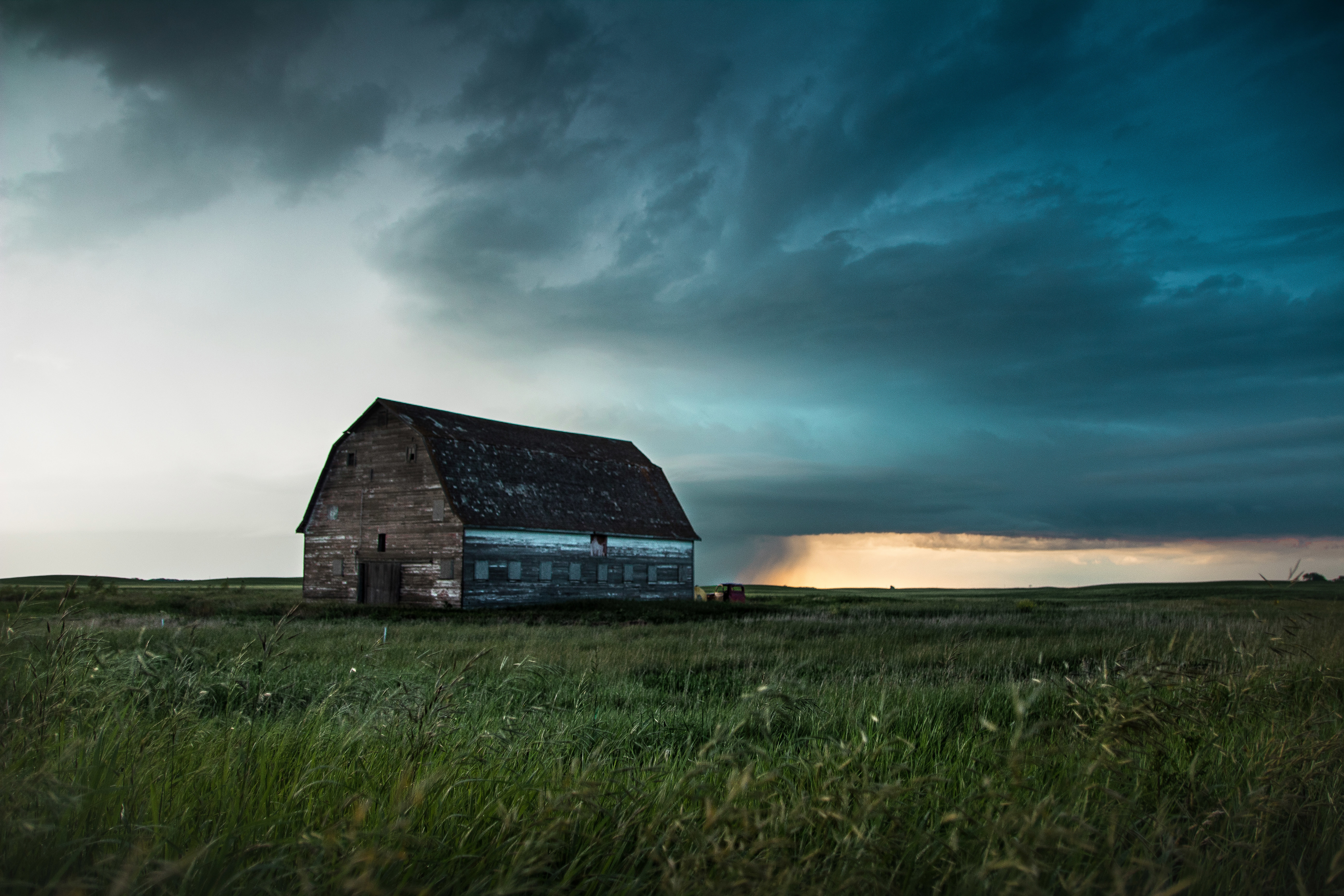

Iwasiuk has had a few close calls, including one nervous moment this summer.
She was chasing a storm from southeastern Saskatchewan into Manitoba with her father and friend when conditions took a dangerous turn near Waskada, in southwestern Manitoba.
The storm was moving fast. With few roads and no cellphone service in the rural area, the group ended up stuck in the "bear's cage," a term used to describe when rain and hail wraps around a spinning vortex of up-rising air that can turn into a tornado.
They pulled onto a farm yard driveway to wait it out. Things got tense.
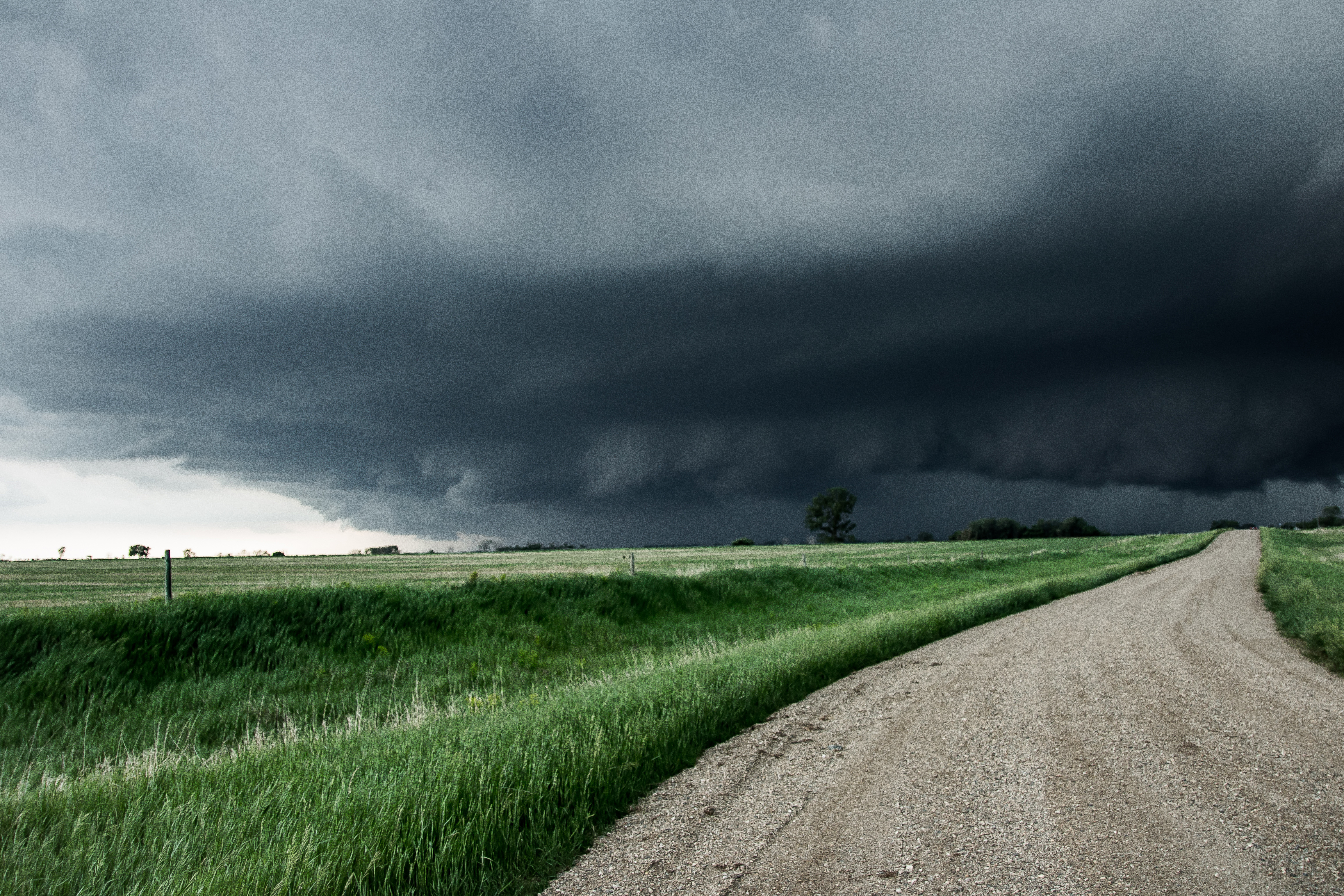
"We were kind of trapped between the hail core and the circulation, which is not a great place to be," she recalled.
"The adrenaline rush…. You're trapped between a tornado forming and a massive wall of hail."
A tornado touched down just to the south a short-time later, narrowly missing the trio but damaging property and vehicles as it surged east toward Winnipeg.
Iwasiuk's vehicle was more or less unscathed, but not every chaser drives away from a storm like that dent-free.
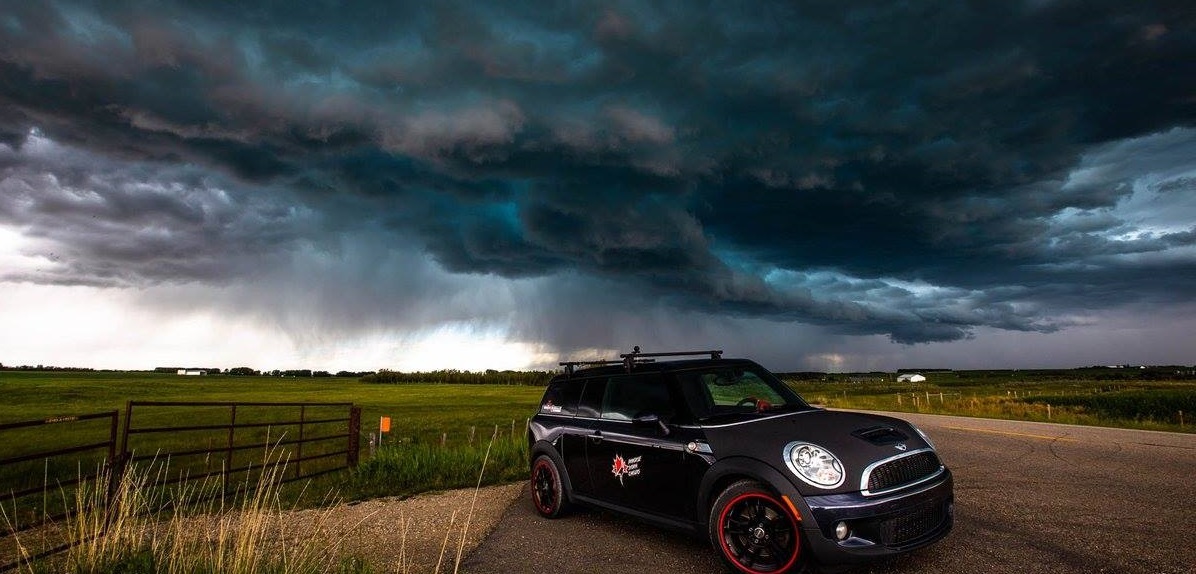
Chris Ratzlaff drives a sporty Mini Cooper with a hood that is reinforced with Line-X coating, a protective layer some chasers cover their entire vehicles in to make them more durable.
The decision to armour up his ride came years after his 2003 "throw away" Mazda Protege took a beating in an Alberta hail storm.
Ratzlaff has always been a fan of inclement weather, but has only been part of the chasing scene for about eight years.
Chris Ratzlaff has seen dozens of tornadoes and documented many wicked storms over the years, including this one that swept from Crossfield to Torrington, Alta., on July 9, 2017.
Like Hines and Iwasiuk, it was one storm in particular that really blew his hair back and got him hooked.
It was 2010, and he could see a broad, brooding supercell storm in the distance from his backyard. He hopped in his car and drove in for a closer look.
"It was just a very beautiful storm," he says.
"You could see pretty much the entire thing rotating upward.... That's where it all started for me."
Now Ratzlaff is a member of a small team of chasers in Alberta and Saskatchewan known as Prairie Storm Chasers.

He's also helping organize ChaserConCanada in Winnipeg this fall from Sept. 28-29. The annual gathering draws chasers of all levels from across Canada to meet, touch base with old friends and learn from the experts.
Ratzlaff doesn't expect many Americans will make the trek. When it comes to travelling long distances for the sake of a storm, it's usually Canadians heading to the U.S., not the other way around.
On the tornado front, Manitoba averages only 10 confirmed reports of twisters per season, CBC Manitoba meteorologist John Sauder says.
That's one reason why so many Canadian chasers head down Tornado Alley — a stretch of land known for tornado activity from northern Texas up through Oklahoma, Kansas, Nebraska, Iowa, and parts of surrounding states.
Ratzlaff says it's not all about the tornadoes, but if that's what you're looking for, Oklahoma, considered a hub of chasing activity, averaged 96 tornadoes annually between 1991 and 2010. Texas averaged 155 tornadoes during the same time period.
But as nice as twisters are to look at from a distance, they're also deadly.
Winnipeg storm chaser Dave Carlsen was among those mourning the deaths of well-known tornado researcher Tim Samaras and two others who died in violent Oklahoma storm in 2013.
In 2013, a tornado killed seasoned tornado researcher Tim Samaras and two others in Oklahoma.
Canadian storm chaser Greg Johnson was there and recorded parts of the storm.
According to the National Oceanic and Atmospheric Association in the U.S., 35 people died in tornado-related incidents in the U.S. in 2017.

Ratzlaff and Jordan Carruthers aren't singularly fixated on tornadoes.
Unlike Ratzlaff, Iwasiuk and Hines, Carruthers can't remember having a “that really did it for me” moment but the family connection was certainly there.
It started with his dad driving him around as a little boy in search of storms.
The passion grew slowly but has taken off in recent years.
"Some of the sights we saw were incredible; that’s really what got me involved," says Carruthers, 26, who has been chasing for 11 years.
"At that point I wanted to learn as much as possible about severe weather so I could know what I was looking for and be able to remain safe but in the right spot."
About two years ago, he and his dad started Manitoba Storm Spotter storm chasing tours.

One-to-two day trips in Manitoba run $250 per person. They charge $3,500 for guided seven day voyages down Tornado Alley.
"It has been a huge hit, and has definitely helped me be able to afford to chase more," he said.
"As you can imagine, with the price of fuel and the fact that we usually put on 50,000-60,000 kilometres per season, it gets pretty expensive."
To plan the timing of such an outing, the Manitoba Storm Spotters study weather models and put out a blast on social media with upcoming chase dates. Those on the tour get a crash course in how to read weather models and an explanation for how to spot what could turn into a good storm.
In May, they take people to Tornado Alley. From mid-June to July — peak season on Canada's Prairies, says Carruthers — they stay closer to home, venturing only about as far as Saskatchewan or the northern plains of the U.S.
According to Carruthers, he runs one of only two or three chasing tours in Canada, including guides Francis Lavigne-Theriault (NZP Chasers) out of Manitoba and Greg Johnson (Tornado Hunters).
The vast majority of money to be made is in the U.S. because there's just more tornado-level storms in the Midwest.

For Kim Hines, going on a storm chasing tour in Tornado Alley was a rite of passage that opened her eyes.
She had been chasing in Manitoba for a few years and had started watching Storm Chasers, a television show starring storm chasing icon Reed Timmer.
Hines was struggling with the death of a friend and former bandmate at the time, so she took a leap and registered for a tour with Extreme Tornado Tours, founded by Timmer.
She saw her first wedge tornado, an equal parts frightening and awe-inspiring gargantuan twister. Her hair stood on end.
"I knew I was obsessed, but when I got down there that solidified everything, and plus it healed me," she says.
"To me nature heals, and these storms for me, they healed me, they took my mind away from everything."
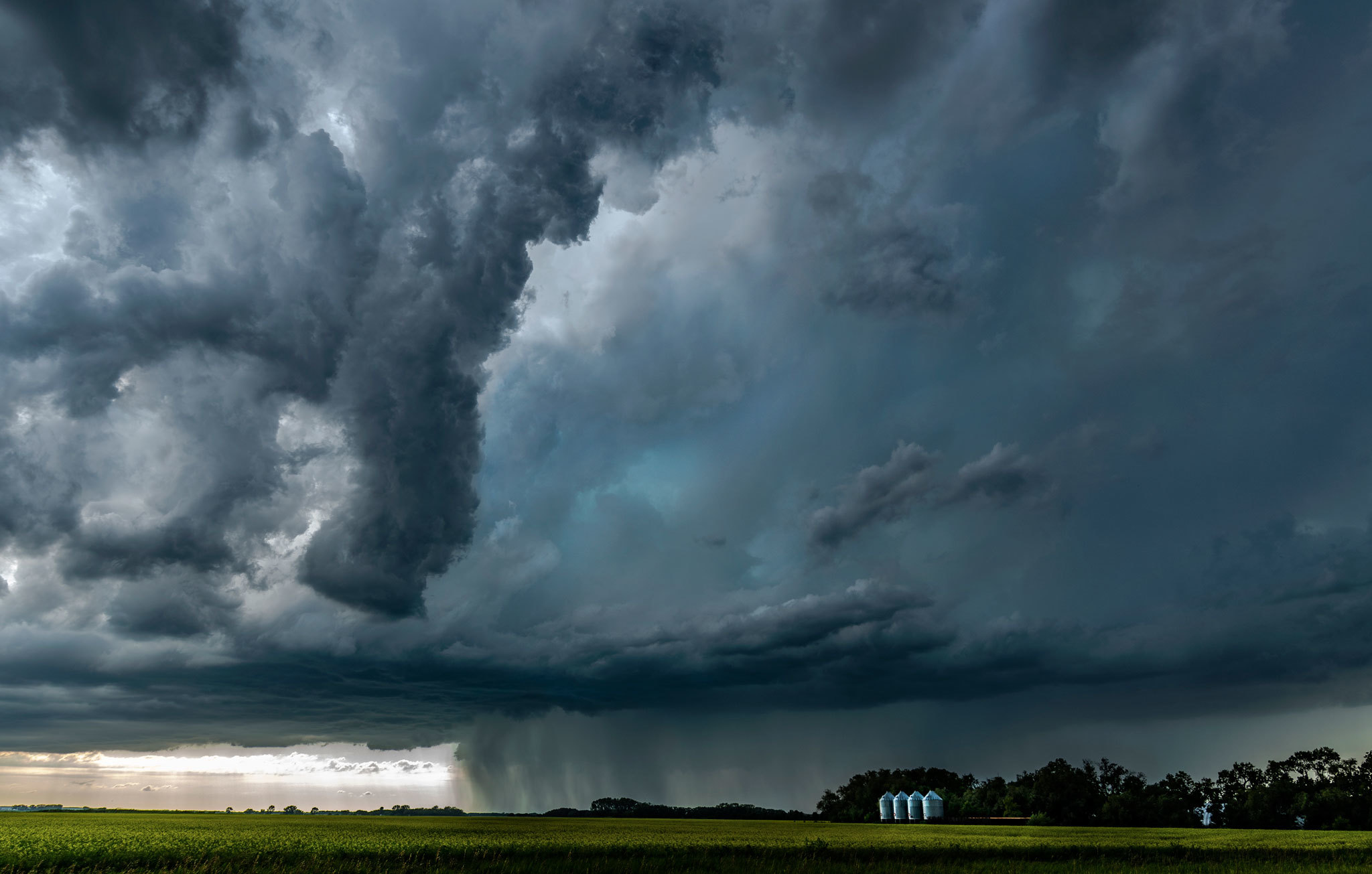
Hines's weather education took on an academic dimension when she took a storm chasing course at the University of Manitoba. There, she learned all about the science behind cloud structure and how storms materialize out of thin air.
She has even channelled her love for storms and the northern lights into her other labours of love: photography and music. Both projects share the name Supernature.
It wasn't until later in life that Hines realized there was maybe more to her fascination than the sheer wonder she experienced when the skies turned scary.
Memories of those times as a kid talking storms with dad came flooding back.
He was a man of few words, but she called him up one day a few years before he passed away after making the connection.
"I said, 'Dad, do you know that I am chasing tornadoes?''" Kines said. "He just laughed and said, 'What do you want to do that for?'"
It seemed unusual to him because he was on the other end of it, forecasting, Hines recalled.
Though she didn't manage to take him out on a tornado hunt before he passed away in April, Hines says that's OK.
"I wish he was still here today to see how much storm chasing has become a huge, huge thing," she says.
"He had a really good, long life and, you know, left me with this!"
